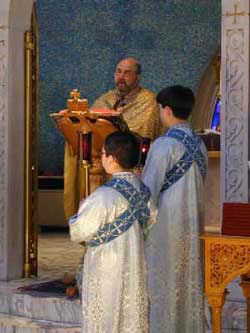March 4, Manchester, N.H. -- We commonly use the word "iconoclast" to describe rebels, dissidents, mavericks, and anyone who strikes out against established traditions and authority. But the word dates back to an eighth-century crisis, in which a succession of Byzantine emperors and their allies among the clergy set about banning the use of icons, and persecuting those who wouldn't obey.
On the second Sunday of Lent, Greek Orthodox parishes commemorate the return of icons to churches following a dispute known as the "Iconoclastic Controversy." Eighth-century Byzantine emperor Leo III, imitating similar trends in Judaism and Islam, prohibited the use of religious images on the grounds that it constituted idolatry. The move, which led to riots and persecutions, and weakened Byzantine rule in Italy, began a dispute that lasted more than a century.
|
 |



